I reach home, drop my backpack, look into the fridge. Mom has made pork sorpotel and I don’t feel like eating. I’m quite turned off after seeing chunks of pork, literally every part of the pig, hang by hooks in shops in the Khasi region of Meghalaya. They eat pork like nobody’s business!
Pork is to Meghalaya what vada pav is to Mumbai and dhokla to Gujarat. Another important ingredient in Meghalaya’s cuisine is rice, not just in their food but in the wine and beer too.
A vegetarian is going to feel out of place here but it’s not like he won’t be able survive. Dal is an important protein for them, although their dals are a little watery. Their tomato chutney is truly local. I even tried some stir fried vegetables at my guest house in Nongriat (although, I’ll admit it tasted like cured meat).
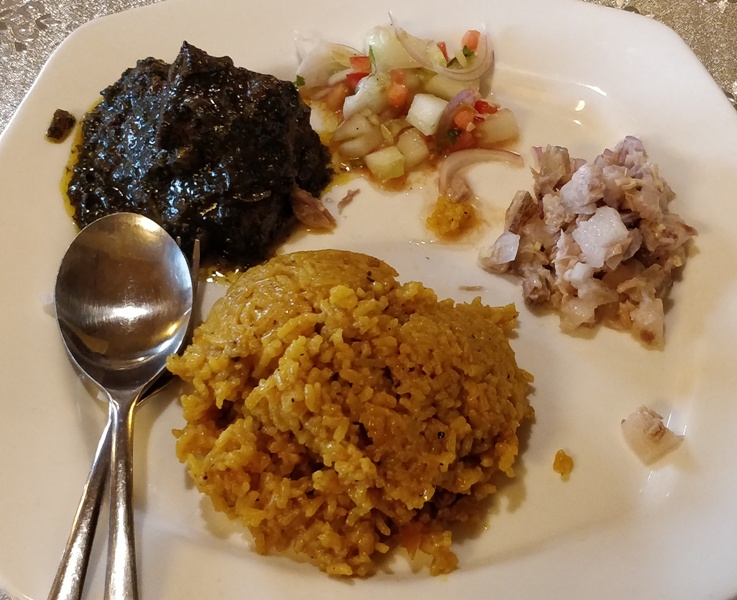
Khasi platter
Khasi cuisine is very minimalist. They barely use any spices except onions, ginger, sesame seeds paste, turmeric, some mustard oil, may be. The two main cooking styles are smoking and fermenting. They smoke the meat and ferment fish, rice, liquor and literally everything else!
It’s good to know that Meghalaya is divided into three tribal belts – Garo, Jaintia and Khasi region. With a little exception here and there, pork and rice is important to all the three regions. I was in the Khasi belt, which is the most popular tourist area of the three. In this post, I’m going to take you on a quick tour of Khasi cuisine and what you need to try on your visit in Meghalaya.
Lal Cha
The literal translation is red tea; it basically is a lighter version of black tea. The red color comes from lightly boiling the tea, almost as if under boiling it. It’s a very fine line and easy to not get it right, which is what happened when we tried Lal Cha for the first time at a tourist point on the way to Dawki. But the subsequent times we had Lal Cha in Nongriat, Cherrapunji and Mawphanlur – top class!
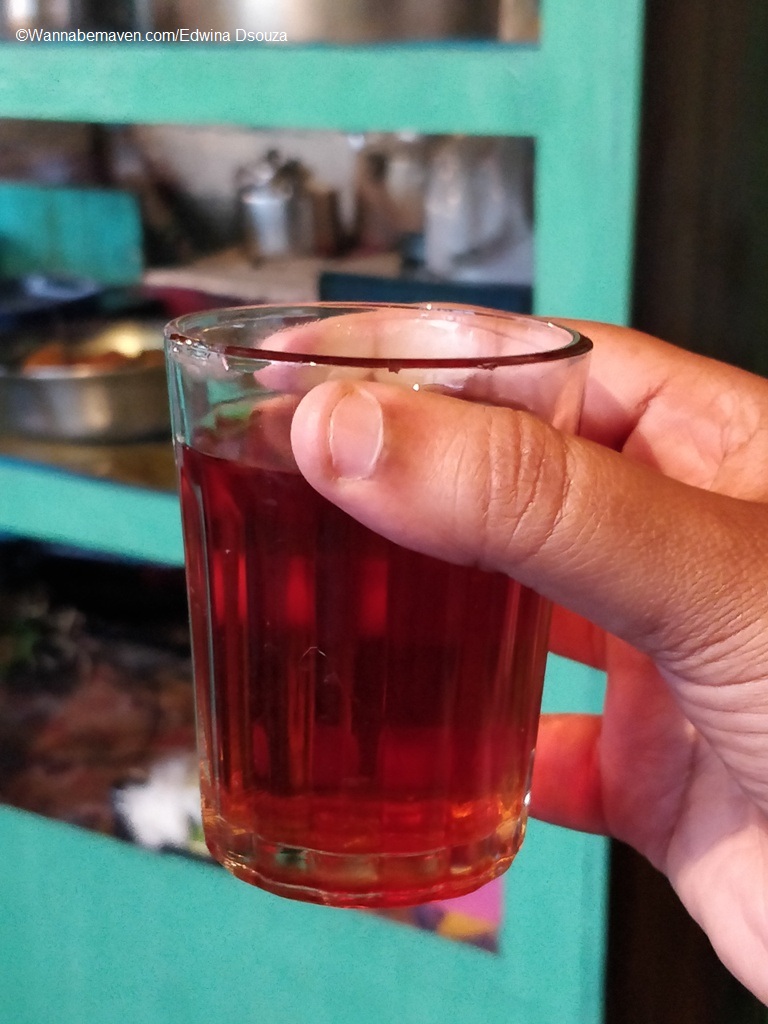
Lal Cha
Jadoh
Jadoh is the star dish of Khasi cuisine. You can get yourself a bowl of Jadoh anywhere across streets and homes in Meghalaya. It means Ja-rice and doh-meat. Think of it as a Khichdi with meat, either pork or chicken. Traditionally, the rice in a Jadoh dish is cooked with pork blood. Some food joints also use pork fat as the stock to cook the rice.
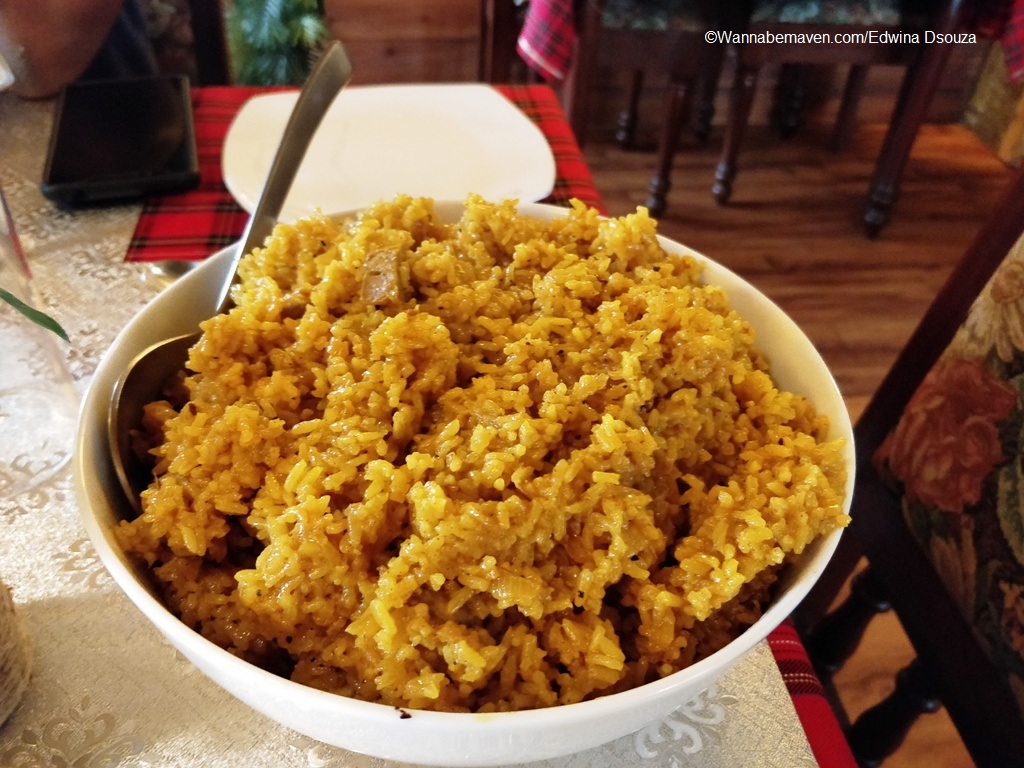
Pork Jadoh
Doh-Khlieh
Where in India would you eat pork in a salad form. Meghalaya, where else? In Doh-Khileh, the meat is smoked and lightly stir fried with onions and ginger. It’s very minimalist with none of the ingredients over powering the other. Again, traditional Doh-Khilieh is cooked with finely chopped pieces of pork head. However now, locals prepare it with pork belly and shoulder cuts too.
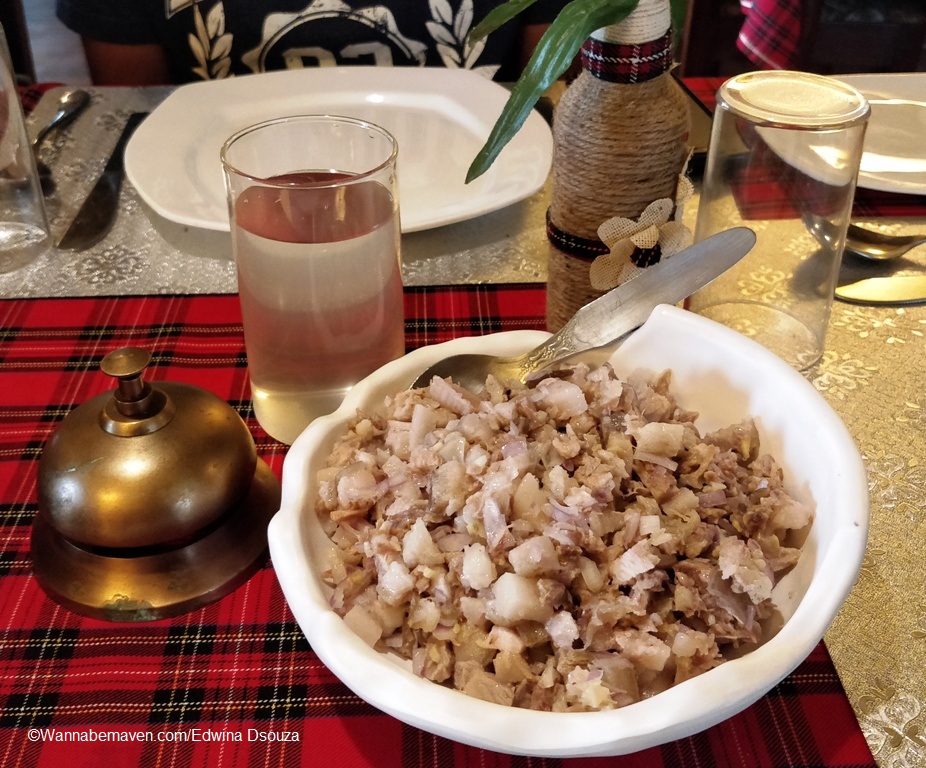
Doh-khlieh – sort of a pork salad
Dohneiiong
Dohneiiong is pork cooked in black sesame paste. It almost looks like a palak paneer sans the palak and the paneer. Chunks of pork pieces, mostly belly cut, are cooked in thick dark greenish gravy. As a curry, Dohneiiong goes well with Jadoh or plain white rice.
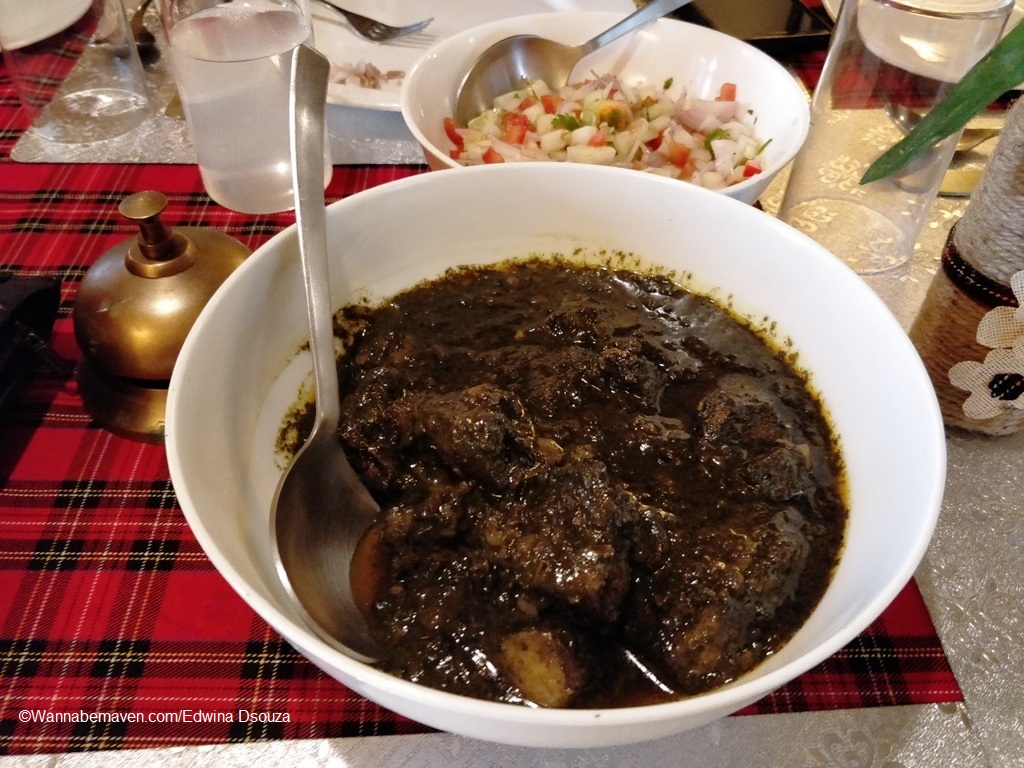
Pork in black sesame paste
Kwai
99% of the population in Meghalaya (both male and female) are always chewing Kwai. It’s a local paan comprising of areca nut, betel leaf and lime paste. The magic ingredient is the size of the areca nut, good enough to give you a high. I tried Kwai in this tiny village, Mawphanlur about 80 km from Shillong. The stuff gave me a two min buzz until I spat it out. Not for me, thank you!
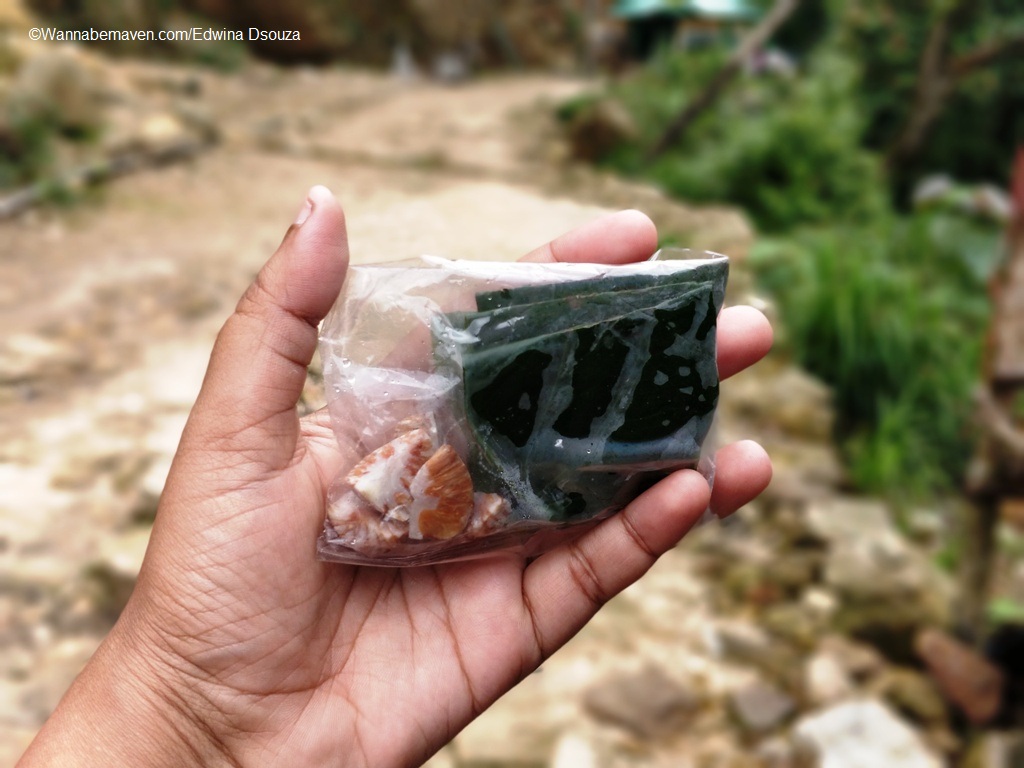
Kwai, a local paan
Duma
This is your local beedi…very popular and organic. The packet comes with a ball of tobacco, paper rolls and a match box. You gotta make your own shiz and smoke. Again, I tried a couple of puffs and gave up. Never enjoyed smoking! But it’s 100% legal and I even bought five packets home to gift people.
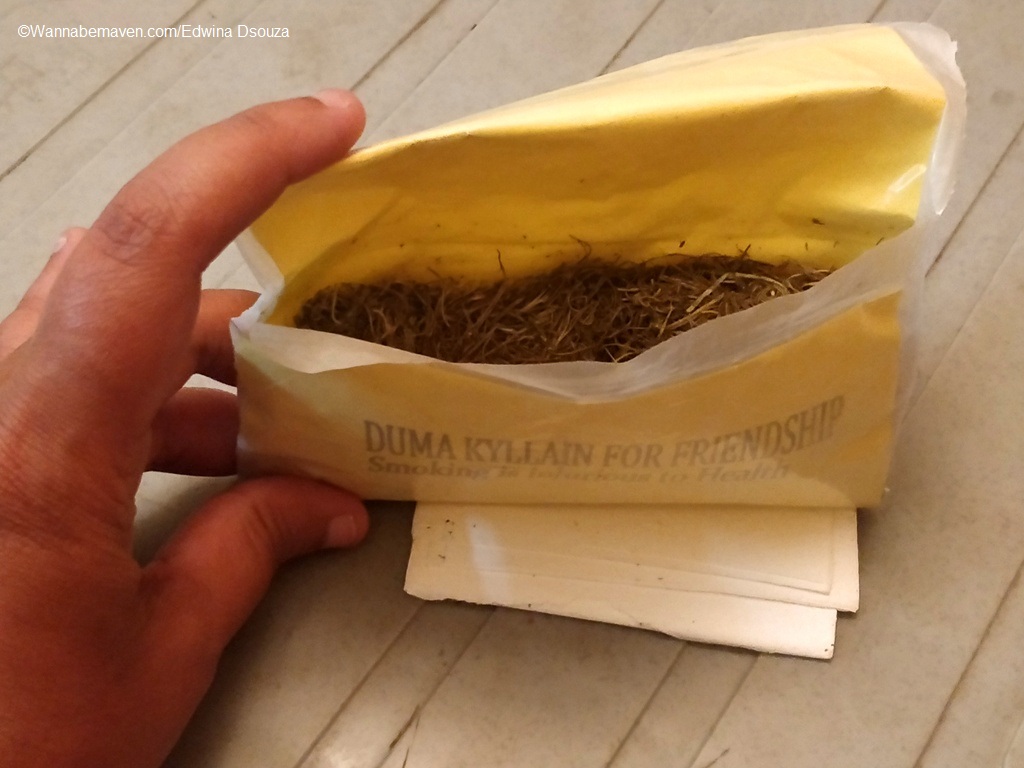
Duma -Beedi
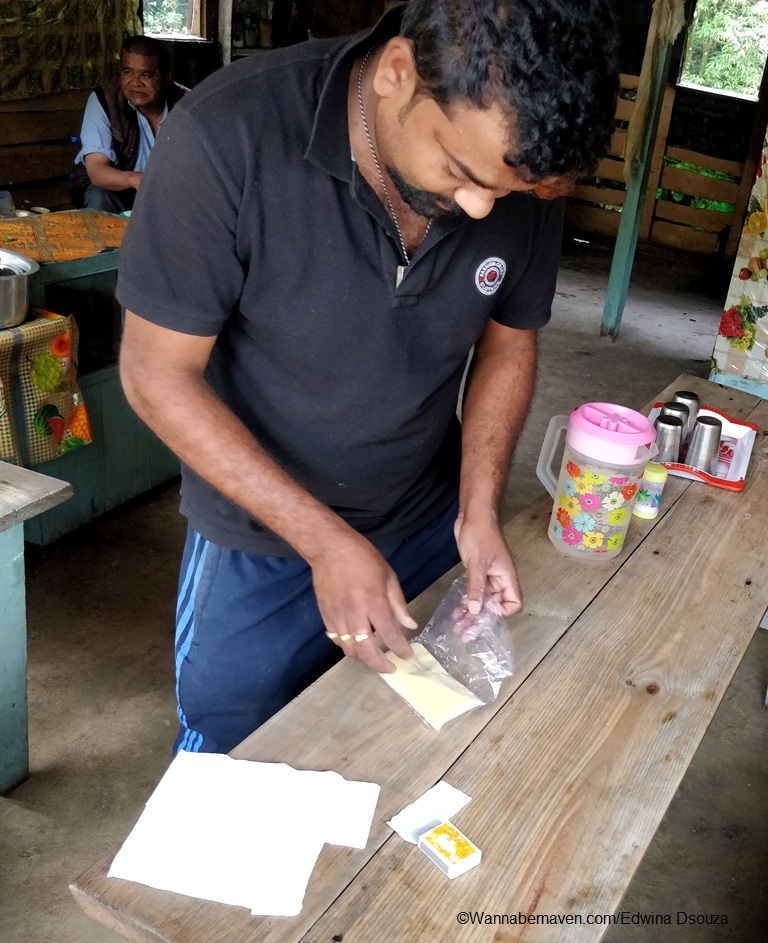
Our driver rolling a Duma for us
Rice wine
The staff at a restaurant we visited in Cherrapunji guided us to a shop where we could buy some homegrown rice wine. Here is when we also found out that rice wine isn’t allowed to be sold during the day in rural Meghalaya. And so the storekeeper packed rice wine in plastic bags which we hid under our t-shirts and took back to the restaurant, where we pretended to drink it as lime juice along with Jadoh and Doh-khlieh.
Other items to sample while in Meghalaya – Mylliem chicken (garlic based chicken gravy), Kyat (rice beer), Pumaloi (sort of a rice cake for breakfast) and Tungtap (fermented fish chutney).
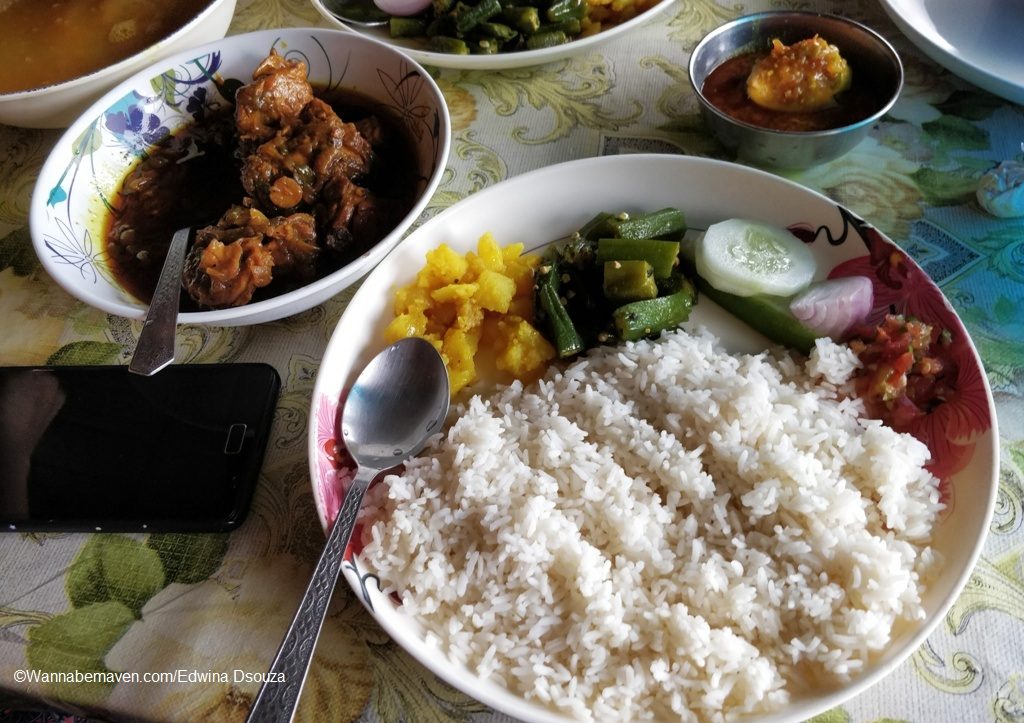
Mylliem chicken rice plate
Top tips for exploring Khasi cuisine in Meghalaya
- Outside Shillong, shops and restaurants shut by 7.30pm. To be safe, book a hotel with an in-house restaurant or intimate your guest house to cook a meal for you ahead of time
- The restaurant scene in Shillong is better than anywhere else in the state. You’ll get your momos, Tibetan and Chindian fusion food. Step out of Shillong and the restaurants make way for tiny wooden shops selling cha (tea) and jingbam (snacks).
- Don’t be fussy about eating at small run down shops here. That’s the fun part! Be assured the food is the real deal and hygienic too. Meghalaya was one of the cleanest states I travelled to.
- Bookmark Cafe Cherrapunji for a Khasi platter. That’s where we tried majority of the Khasi dishes too.
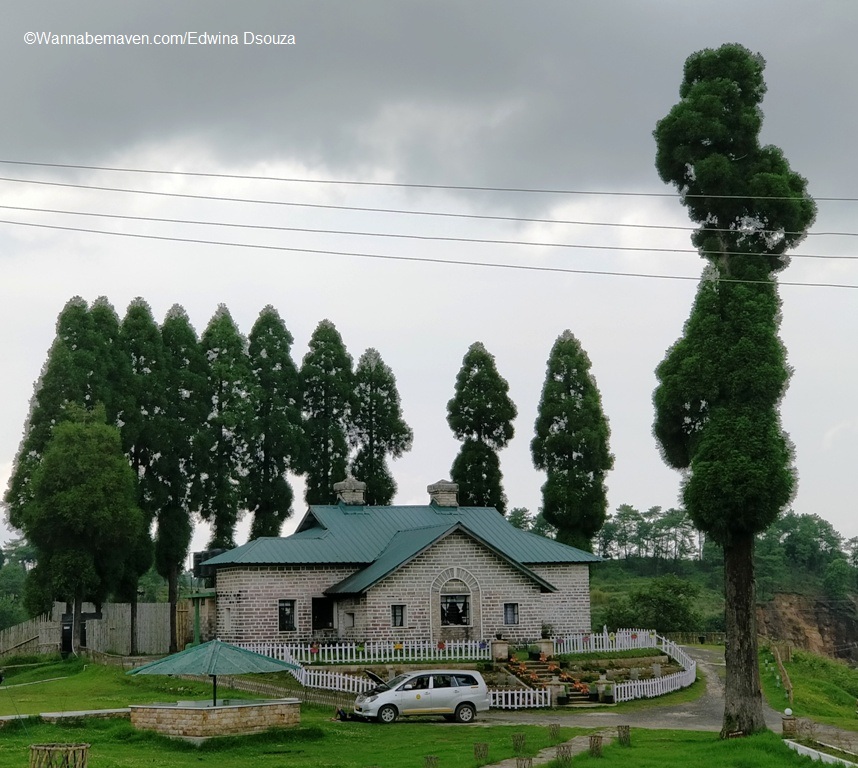
The very cute Cafe Cherrapunji
In a nutshell, if I have to summarise Khasi cuisine, it’s an acquired taste. Not really everyone’s cup of tea. If I ever return to Meghalaya, which I definitely will, I ain’t returning for the food. But that’s just my view. Go give the cuisine a shot. Come back and tell what did you think.
==
Also read
What they don’t tell you about Dawki
==
Join me on Twitter, Facebook and Instagram for more such travel stories and photographs. I also make cool status updates, just in case you like randomness.
Subscribe to this blog to receive my monthly newsletter with cool travel stories, updates and deals and discounts in your inbox

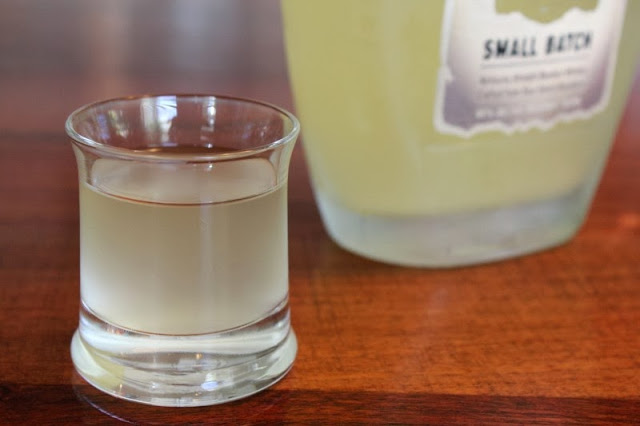
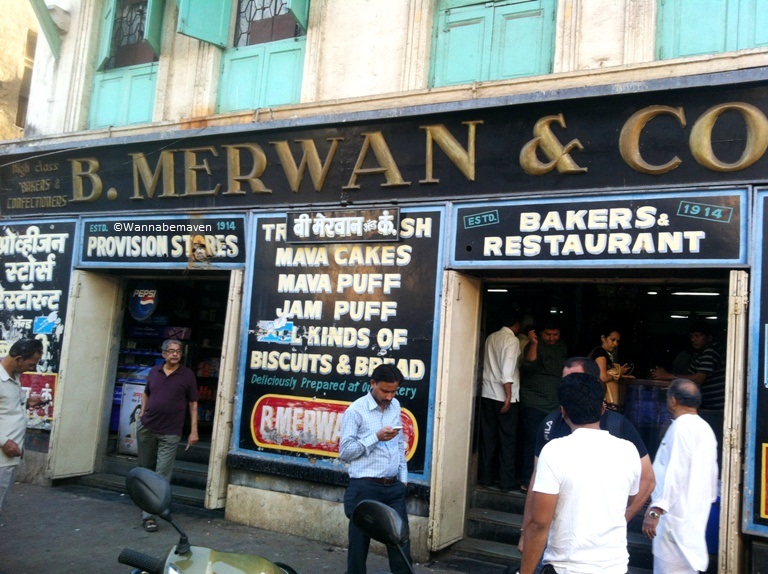
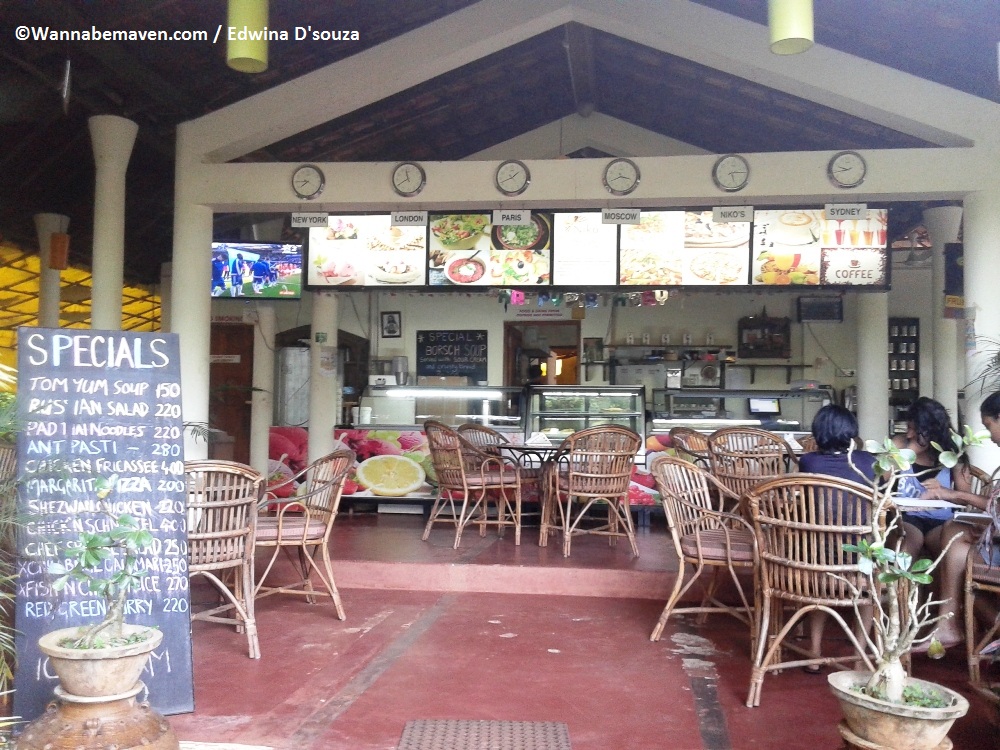
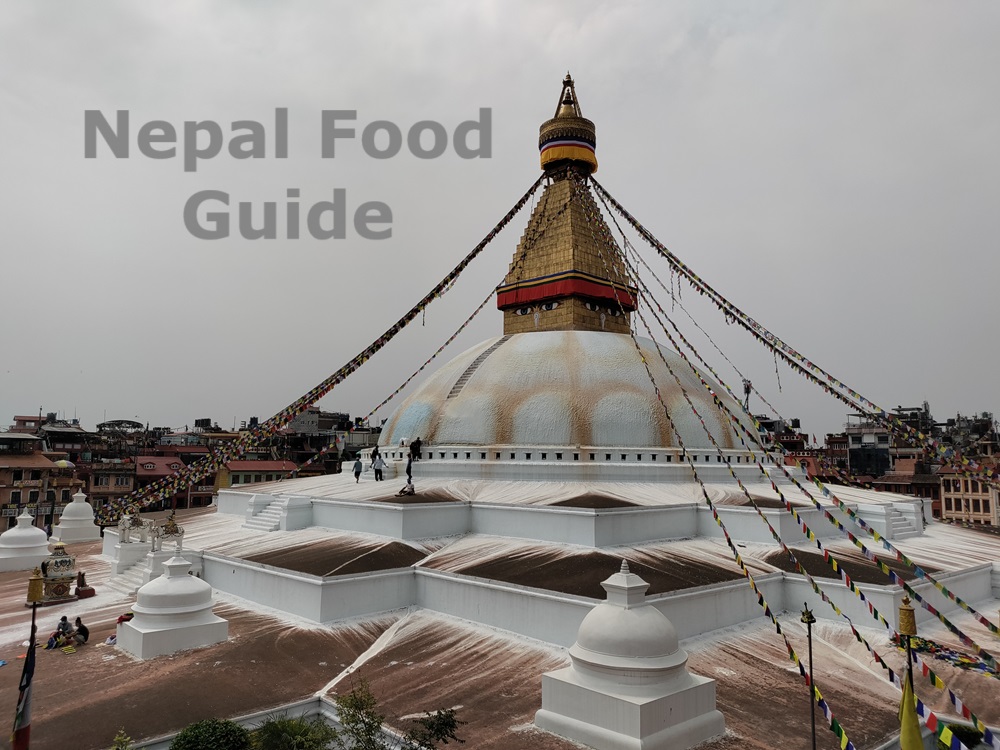
Hi Edwina. Interesting post. My question is – what are vegetarian options in this (obviously) pork/meat filled cuisine? Also, would you recommend a trip on mid Oct or Nov?
Hi Shabana, the local community eats a decent amount of lentils too. I had a hearty vegetarian meal in Nongriat while doing the double decker living root bridge trek. Tourist friendly places like Shillong will not disappoint vegetarians, but rest of the places could be a little tricky. October (end) – November onward is a great time to go. Waters will be crystal clear at Dawki and Rainbow falls
Thanks, Edwina, that is helpful. One more question, if you don’t mind: if I’d like to visit the eastern states, what route would you suggest for a 10 days period? Any advise, like, where I may like to spend more time and where less, what I shouldn’t miss…, etc. I’m a writer, and a cultural traveler and for most part love to try local cuisine, but of course with some reservations.